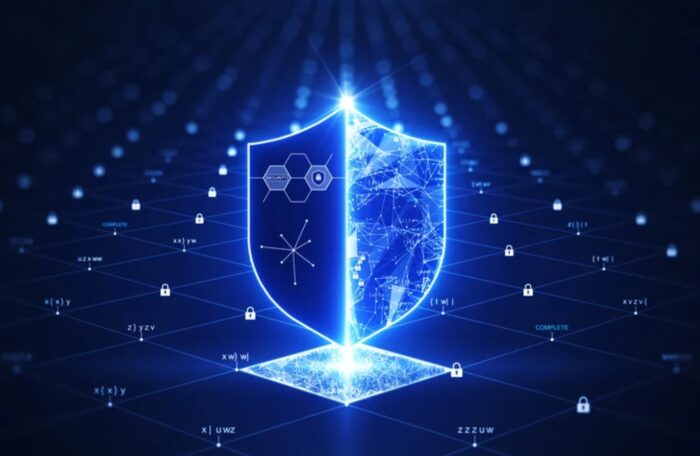
As data breaches dominate headlines and regulations impose heavy fines for compliance failures, business leaders recognize the need for comprehensive security foundations before adverse events force a crisis response. By taking a proactive and architectural approach to security, companies can build protections aligned with business needs rather than reacting fearfully to the latest threats. Prioritizing foundational security also yields returns like improved operational efficiency and reduced risk far surpassing the investments required.
Embed Security into Business Processes

Rather than an afterthought once systems face threats, security reviews and control implementation should be obligatory milestones in IT and business project lifecycles.
- Require security sign-off before launch – Integrate security assessment as a distinct project phase alongside requirements definition and testing.
- Build sign-off checks by security engineers into the approval process prior to transitioning projects from development to production.
- Design controls appropriate to data and functions – The nature of security measures should fit the sensitivity of data handled and criticality of functions within the system. Prioritize foundational controls like access management for all projects. Assess the need for added measures like encryption, logging, or resiliency mechanisms based on risk analysis.
Align Data Governance and Access Policies
Implement controls during data storage and access instead of retroactively securing vast repositories.
- Tag sensitive data at origin – Metadata tagging frameworks that classify sensitivity levels should tag data as early in the pipeline as feasible, even at point of collection from customers/partners. Automate propagating tags through layers of processing and storage.
- Apply tiered access controls upfront – Governance policies should guide access workflows based on data sensitivity tiers. Enforce least-privilege permissions, temporary credential issuance, and manual approval gates prior to accessing the most sensitive data.
Cultivate Collective Security Mindset
Foster intrinsic security awareness across the entire organization beyond technical teams through culture and education.
- Incentivize secure behaviors – Employee feedback and performance metrics should include security criteria rather than solely business output and availability measures sometimes prioritized over controls. Reward practices like reporting risky behaviors, attending security forums and proper credential management.
- Operationalize awareness – Make secure decision-making intrinsically valued through frequent touch points like integrated data classification guides, subtle visual security cues and required security attestations periodic for general access.
- Ensure universal reinforcement mechanisms – General organizational phishing tests reinforce the shared responsibility for secure behavior. Ensure tests are regular and results shared back to employees as a learning experience.
Architect Systems with Security in Mind

Legacy environments known for their fragility and complexity often inspire the impulse to drop isolated security controls atop them. But the far better path is an architectural approach factoring security into modernization efforts. Prioritize solid identity and access foundations since compromised credentials represent the root cause behind most damaging data breaches. Implement centralized logging with long retention periods to enable both security monitoring and forensics after incidents.
Shift infrastructure to cloud providers who deliver robust and redundant security-as-a-service offerings far surpassing on-premises controls feasible for most organizations. Cloud’s elasticity and automation intrinsically strengthens security and lowers associated burdens. On-premises systems should adopt zero trust principles: strict network segmentation, least privilege access, and continuous authorization checks.
Stock Your Security Toolkit

A range of preventative and detective technical controls working harmoniously constitutes a mature security capability. Continually expand your toolkit to strengthen defense in depth.
Core Security Tools
Endpoint detection and response solutions enforce access policies while providing visibility into distributed systems. Web and email gateways filter out known threats at network perimeters without obstructing workflows. Aggregators like SIEM consume signals from critical systems to uncover anomalies and investigate threats.
Threat Intelligence Feeds
Outsourced intelligence augments controls by rapidly alerting on emerging attacker infrastructure used in intrusions. Most organizations find developing large-scale intel capabilities internally cost prohibitive. Lean on intelligence feeds to detect advanced threats early based on latest methods learned across the provider’s client base. Robust toolsets integrated with real-time intelligence maximize impact.
Outsource Your Security Operations Center

Standing up an internal security operations center (SOC) ties together security tool sets for unified protection. The SOC oversees and operates controls like endpoint detection, web proxies, SIEM, and threat intelligence. But developing skilled analysts and mature monitoring capabilities in-house has a very high bar.
Benefits of Outsourcing
Outsourced SOC services provide scale and expertise by consolidating security operations for multiple clients.
- Centralized infrastructure and analysts – Providers leverage unified infrastructure, playbooks and teams supporting numerous customers at once. This creates economies of scale surpassing most individual enterprise SOCs.
- Mature capabilities and threat visibility – Seasoned providers apply lessons learned across entire customer bases to strengthen use cases like correlation rules, enriched threat intelligence, and incident response plans.
- Reduction in overhead costs – Outsourcing SOC saves money by lifting the burden of overhead, such as maintaining 24/7 analyst staffing rotations, infrastructure costs, and analyst skill development.
- Flexibility for customization – Managed SOC services balance standardization with customization for the needs of each client’s environment, data, and regulatory demands.
Consider Mature Capabilities
Advanced SOC providers offer managed detection and response (MDR) with autonomous threat hunting, investigation of alerts, and ability to contain detected threats ‐ all with minimal customer involvement. MDR represents the future for maximizing the impact of SOC capabilities.
Maturing In-House Over Time
While outsourcing SOC can be a permanent solution, larger enterprises often mature capabilities in-house after building security foundations for greater customization. Revisit possibly transitioning elements of the SOC internally once organizational readiness and budget allows.
The Bottom Line

Modern enterprises hoping to stay ahead of threats cannot afford leaving security as an afterthought layered upon outdated and fragile architectures. Prioritizing security foundations early in business processes, system designs and toolchain assembly yields multiplier effects and mitigates downline costs. While outsourcing specialized but resource-intensive capabilities like SOCs, don’t neglect incubating some in-house skills even if starting small. With proactive planning and a long-term roadmap instead of fearful reactions, impactful security transformations become achievable.





